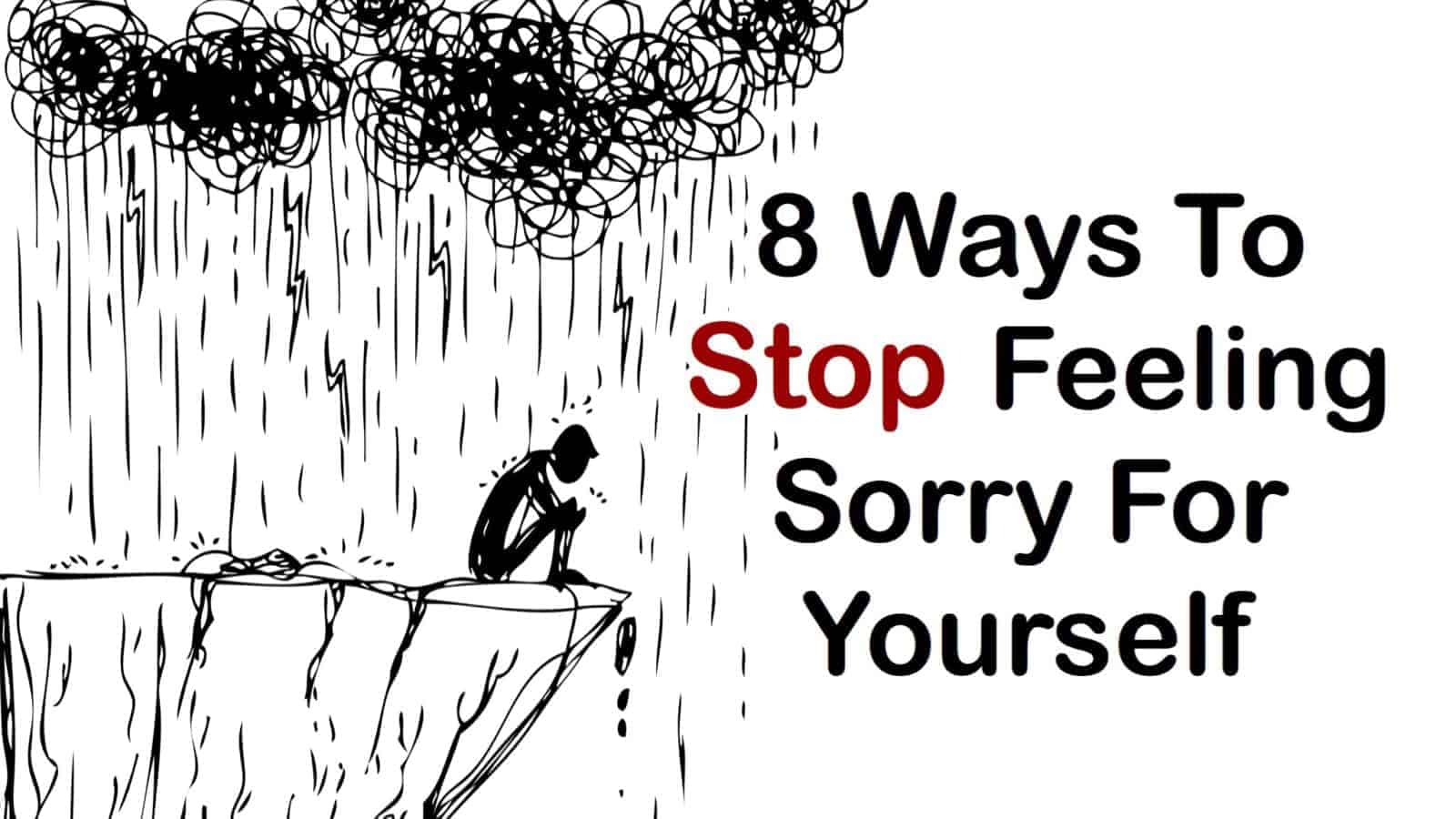How To Tell Someone To Stop Feeling Sorry For Themselves

We've all been there: witnessing a loved one, friend, or even colleague drowning in a sea of self-pity. It's uncomfortable, draining, and often, we feel helpless. But what if you could help them navigate their emotions and break free from this cycle? This article provides an analytical approach to guiding someone out of self-pity, understanding that empathy and strategic communication are key.
This analysis is tailored for the value-conscious individual – someone who understands the importance of effective communication and wants to approach these delicate situations with intention and care. We'll explore practical strategies, mindful communication techniques, and resources that can help you make a real difference, all while respecting your own emotional boundaries.
Understanding the Landscape of Self-Pity
Self-pity, at its core, is an excessive focus on one's own troubles and perceived misfortunes. It's characterized by feelings of helplessness, hopelessness, and often, a desire for sympathy from others. Recognizing the difference between genuine grief or hardship and habitual self-pity is crucial for effective intervention.
Chronic self-pity can be detrimental to mental health, hindering personal growth and damaging relationships. Identifying the underlying causes, such as unresolved trauma, low self-esteem, or learned behavior, can illuminate the best approach for support.
Strategic Communication: Tools for Change
The Empathetic Listener: Entry-Level Support
Sometimes, simply listening without judgment is the most powerful initial step. Offer a safe space for the person to express their feelings, acknowledging their pain without necessarily agreeing with their self-pitying narrative.
Active listening involves paying attention, reflecting back what you hear, and asking clarifying questions. This validates their emotions and helps them feel understood, which can be the first step toward shifting their perspective.
The Gentle Challenger: Mid-Range Intervention
Once a foundation of trust is established, gently challenge the person's negative thought patterns. Encourage them to identify any cognitive distortions, such as catastrophizing or overgeneralization.
Ask probing questions like, "Is there another way to look at this situation?" or "What evidence do you have to support that belief?" This can help them see their situation more objectively and identify potential solutions.
The Accountability Partner: High-Impact Approach
For individuals who are open to it, offering to be an accountability partner can be incredibly effective. This involves helping them set realistic goals, track their progress, and celebrate their successes, no matter how small.
Encourage them to focus on what they can control, rather than dwelling on what they can't. This promotes a sense of agency and empowers them to take action to improve their situation.
Productivity & Perspective: Resources for Transformation
Think of these "products" as different communication styles, approaches, and even self-help techniques, categorized by the level of effort and potential impact.
Shortlist of Resources: Tailored Approaches
- Entry-Level (Low Effort, Initial Impact): Active Listening Guide – a simple framework for practicing empathetic listening.
- Mid-Range (Moderate Effort, Sustained Impact): Cognitive Behavioral Therapy (CBT) Workbook – a self-guided resource for identifying and challenging negative thought patterns.
- High-Impact (Significant Effort, Transformative Potential): Professional Therapy – connecting them with a qualified therapist who can provide personalized support.
Detailed Reviews
Active Listening Guide: This guide focuses on the basics of empathetic communication, including techniques like paraphrasing, reflecting emotions, and asking open-ended questions. It's a great starting point for anyone who wants to improve their listening skills and offer more effective support.
CBT Workbook: CBT workbooks provide structured exercises and techniques for identifying and changing negative thought patterns. They are a valuable tool for individuals who are motivated to work on their own mental health but may not be ready for professional therapy. Be aware that progress depends on consistent effort and self-reflection.
Professional Therapy: A qualified therapist can provide personalized support and guidance, helping the person address the underlying causes of their self-pity and develop healthier coping mechanisms. It's the most intensive option but also potentially the most transformative.
Side-by-Side Specs Table
| Resource | Effort Required | Potential Impact | Cost |
|---|---|---|---|
| Active Listening Guide | Low | Initial | Free (online resources) |
| CBT Workbook | Moderate | Sustained | $15-$30 |
| Professional Therapy | Significant | Transformative | $80-$200+ per session |
Practical Considerations
Before intervening, assess your own emotional capacity. You can't effectively help someone if you're feeling drained or overwhelmed. Set clear boundaries and prioritize your own well-being.
Choose the right time and place for these conversations. Avoid addressing the issue when either of you are feeling stressed or rushed. Create a calm and supportive environment where you can both speak openly and honestly.
Be prepared for resistance. Not everyone is receptive to feedback, especially when it challenges their self-perception. If your efforts are met with hostility or defensiveness, it may be best to disengage and seek guidance from a professional.
Summary: Making an Informed Decision
Helping someone break free from self-pity requires empathy, strategic communication, and a commitment to supporting their growth. Active listening, gentle challenges, and accountability partnerships are valuable tools in this process.
Remember to consider your own emotional boundaries and choose the right time and place for these conversations. Not every approach will be effective for every individual, so be prepared to adapt your strategy as needed.
Ultimately, the goal is to empower the person to take ownership of their emotions and create a more fulfilling life. Be patient, persistent, and celebrate their progress along the way.
Call to Action
Ready to make a difference? Start by reflecting on your own communication style and identifying areas for improvement. Choose one of the resources mentioned in this article and begin practicing the techniques today. Your compassion and support can be the catalyst for positive change.
Frequently Asked Questions (FAQ)
Q: What if the person refuses to acknowledge their self-pity?
A: You can't force someone to change. Focus on setting healthy boundaries and protecting your own well-being. Sometimes, the best you can do is offer your support from a distance.
Q: How do I avoid enabling their self-pity?
A: Avoid excessive sympathy or offering solutions without encouraging them to take responsibility. Instead, focus on empowering them to identify their own solutions and take action.
Q: When should I recommend professional therapy?
A: If the person's self-pity is chronic, debilitating, or accompanied by other mental health symptoms, professional therapy is highly recommended. It's also a good option if your efforts to help them are unsuccessful.
Q: Is it okay to express my own frustrations with their self-pity?
A: It's important to communicate your feelings in a respectful and constructive manner. Avoid accusatory language or personal attacks. Focus on expressing how their self-pity is impacting you and what you need from them.


















